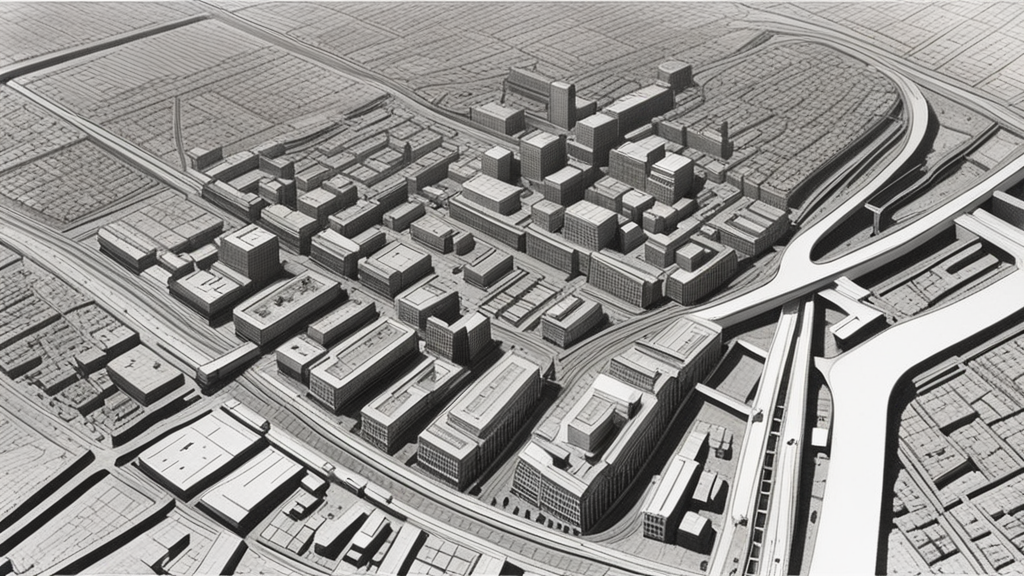Urban planning and the surprisingly sophisticated layouts of ancient cities
The roots of urban planning run far deeper than we might imagine. Long before the term "urban planner" was coined, ancient civilisations were already mastering the art of city design - without the aid of AutoCAD, GPS, or Google Earth. From the grid systems of the Indus Valley to the intricate road networks of the Roman Empire, ancient cities display a level of planning and foresight that continues to inspire and puzzle historians and archaeologists. These early urban environments were often constructed with striking regularity, deliberate social organisation and advanced infrastructure.
The Indus Valley
Around 2600 BCE, the Indus Valley Civilisation emerged in what is now modern-day Pakistan and northwest India. Cities like Mohenjo-daro and Harappa are considered among the earliest examples of sophisticated urban planning, but what sets them apart?
Firstly, the grid layout. These cities were built with remarkable uniformity. Streets were laid out in perfect right angles, dividing the city into blocks much like a contemporary US city plan. Main streets were wide and straight, intersecting with narrower lanes to create a coherent navigational structure.
The infrastructure was ahead of its time. The Indus cities boasted advanced drainage systems, with covered sewers running alongside streets, connected to private wells and bathing areas within homes. Many buildings had toilets that emptied into these drains, a level of sanitation not seen in many parts of the world until thousands of years later.
There was also clear zoning. Public baths, granaries, marketplaces and residential areas were clearly demarcated, suggesting not just engineering skill, but a sophisticated understanding of how people lived, worked and interacted in urban settings.
Ancient Egypt
Though best known for its monumental architecture - the pyramids, temples and tombs - ancient Egypt also practiced urban planning, particularly in cities constructed during the Middle and New Kingdom periods.
One striking example is the workers' village at Deir el-Medina, established around 1500 BCE for artisans working on the royal tombs in the Valley of the Kings. This village was planned with a uniform layout - a walled settlement with rows of identical houses and streets that ran in parallel. Each house had a standard design, typically with a small courtyard, a main room and a storage area. The uniformity suggests a central authority not only commissioning the village, but also regulating its construction.
The city of Amarna, founded by the Pharaoh Akhenaten, offers another example. Built rapidly around 1346 BCE to serve as the new capital, Amarna featured broad streets, zoned residential areas, administrative districts and religious complexes. Though short-lived, the city demonstrates the pharaoh's ability to execute a comprehensive urban plan from scratch.
Mesopotamia
Mesopotamia - "the land between the rivers" - is often called the cradle of civilisation. Cities like Ur, Uruk, and Babylon were centres of trade, governance and religion as early as 3000 BCE.
These cities were often circular or oval, enclosed by walls for protection. Within these walls, zoning played a key role. Temples and palaces dominated the central core, symbolising the power of religion and monarchy. Around them lay residential areas, workshops and marketplaces.
Babylon, in particular, stood out for its grand avenues, hanging gardens and immense city walls. The Processional Way, a wide, paved road used for ceremonial purposes, ran through the city, culminating at the Ishtar Gate - a magnificent entrance decorated with glazed bricks and mythical beasts.
The sophistication of Mesopotamian cities was underpinned by a codified legal and bureaucratic system, including the famed Code of Hammurabi, which likely played a role in standardising building practices and civic organization.
Mesoamerica
Across the ocean in the Americas, the ancient cities of the Maya, Aztec and earlier Olmec civilisations showcased unique approaches to urban planning, often influenced by religious and cosmological beliefs.
Teotihuacan, a massive city northeast of modern-day Mexico City, flourished between 100 BCE and 550 CE. At its peak, it was one of the largest cities in the world, home to over 100,000 people. The city was laid out in a grid, with the central Avenue of the Dead running for over 2 km, lined with pyramids, temples and plazas.
The layout aligned with celestial events, showing an integration of astronomy and urban design. Temples and pyramids were strategically placed not just for aesthetics or functionality, but to reflect spiritual beliefs and cosmic order.
Similarly, the Maya city of Tikal in modern-day Guatemala combined natural topography with constructed spaces. Although not as grid-like, it featured monumental plazas, ball courts and temples arranged with ceremonial and calendrical significance.
Ancient China
Chinese urban planning, especially from the Zhou Dynasty onward (1046–256 BCE), reflected Confucian and Daoist principles as well as strict imperial control.
Chang'an (modern-day Xi'an), capital during several dynasties, became the model for Chinese cities for centuries. It was a planned city with a rectangular layout, divided into wards and neighbourhoods. The palace complex occupied the northern centre, aligned along a strict north-south axis - a reflection of the cosmic order and political hierarchy.
The city was enclosed by massive walls, with gates aligned to the cardinal directions. Markets were placed in designated zones and residences were planned according to rank and occupation.
This approach to city building was not only philosophical, but also practical, enabling efficient governance, trade and defence.
Greece and Rome
The Greeks formalised the concept of city planning, particularly through the work of Hippodamus of Miletus (5th century BCE), often called the "father of urban planning." He advocated for grid layouts, zoning and rational city structure.
Greek cities like Priene followed these ideals, with a rectilinear grid plan, a central agora (marketplace) and zoning for residential, commercial and religious uses.

The Romans took these ideas and elevated them with a focus on infrastructure and standardisation. Roman cities across the empire were laid out in grids with two main roads (cardo and decumanus) intersecting at the forum. These cities included aqueducts, sewer systems, public baths, amphitheatres and forums, all reflecting a standardised yet flexible model that allowed for rapid urbanisation across Europe, the Middle East and North Africa.
Roman military camps (castra) were also planned with precision and often evolved into permanent settlements that still influence the layout of modern European cities.
Lessons from the Past
So what can modern urban planners learn from these ancient cities? Ancient planners understood the importance of separating residential, religious, commercial and industrial spaces. This was not just functional, but often symbolic. Cities like Mohenjo-daro and Rome integrated sanitation, water supply and road systems directly into the urban fabric.
Many ancient cities were also built with local materials and designed to adapt to their climates - offering early examples of sustainable construction. Furthermore, urban planning was a form of cultural and religious expression, not just a utility. Modern cities can take cues from this by blending identity with function. Despite having many monumental buildings, most ancient cities were walkable and designed around human activity, something many modern urban centres are now trying to recapture.
Long before modern tools and formal disciplines, ancient civilisations were laying the groundwork for what we now recognise as urban planning. These early city-builders combined practical needs with cultural values, creating environments that facilitated governance, trade, worship and community life.
Their achievements remind us that the principles of good urban design - efficiency, accessibility, sustainability and identity - are timeless. In many ways, we are not just designing the cities of the future - we are rediscovering the wisdom of the past.
By looking back at how cities were planned before there were town planners, we gain a deeper appreciation for the ingenuity and vision of ancient societies - and perhaps some inspiration for how we plan the cities of tomorrow.
Additional Articles

Why everyone has a favourite skip and what it says about you
In construction, there are two universal truths – tea, of course, is essential and believe it or not, everyone - whether they are prepared to admit it - has a favourite skip. It may sound strange,...
Read moreThe cultural significance of the bacon roll in UK construction
Walk onto any construction site in the UK at 7:30am and you’ll quickly discover that the most important piece of equipment isn’t a digger, a drill or a laser level. It’s a humble, foil-wrapped,...
Read more

Check out the odd things unearthed on construction sites
Dig deep enough on a construction site and you might be amazed at what you find. In fact, if there is anywhere destined to uncover hidden treasures, you are in the right place. Large-scale ground...
Read more